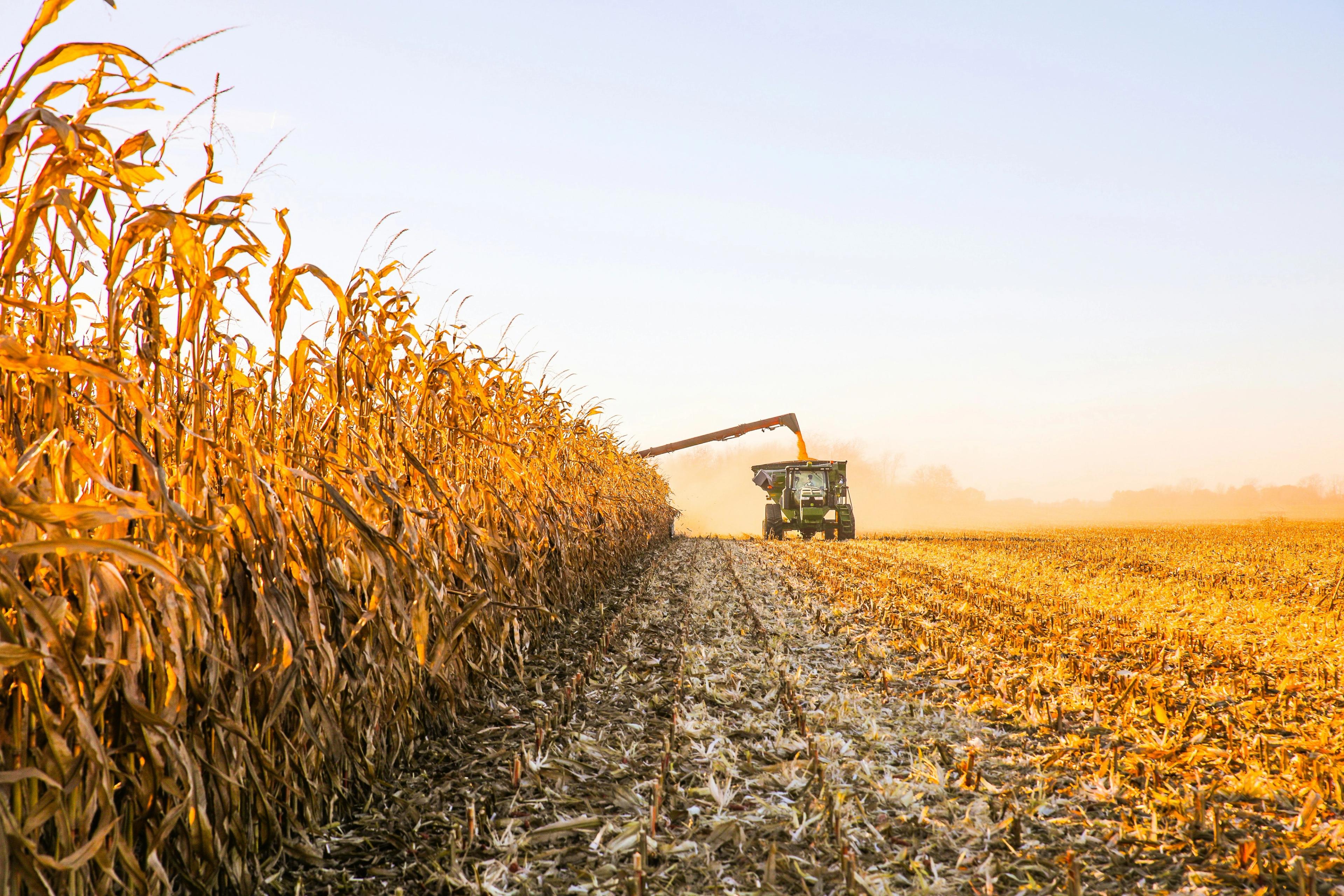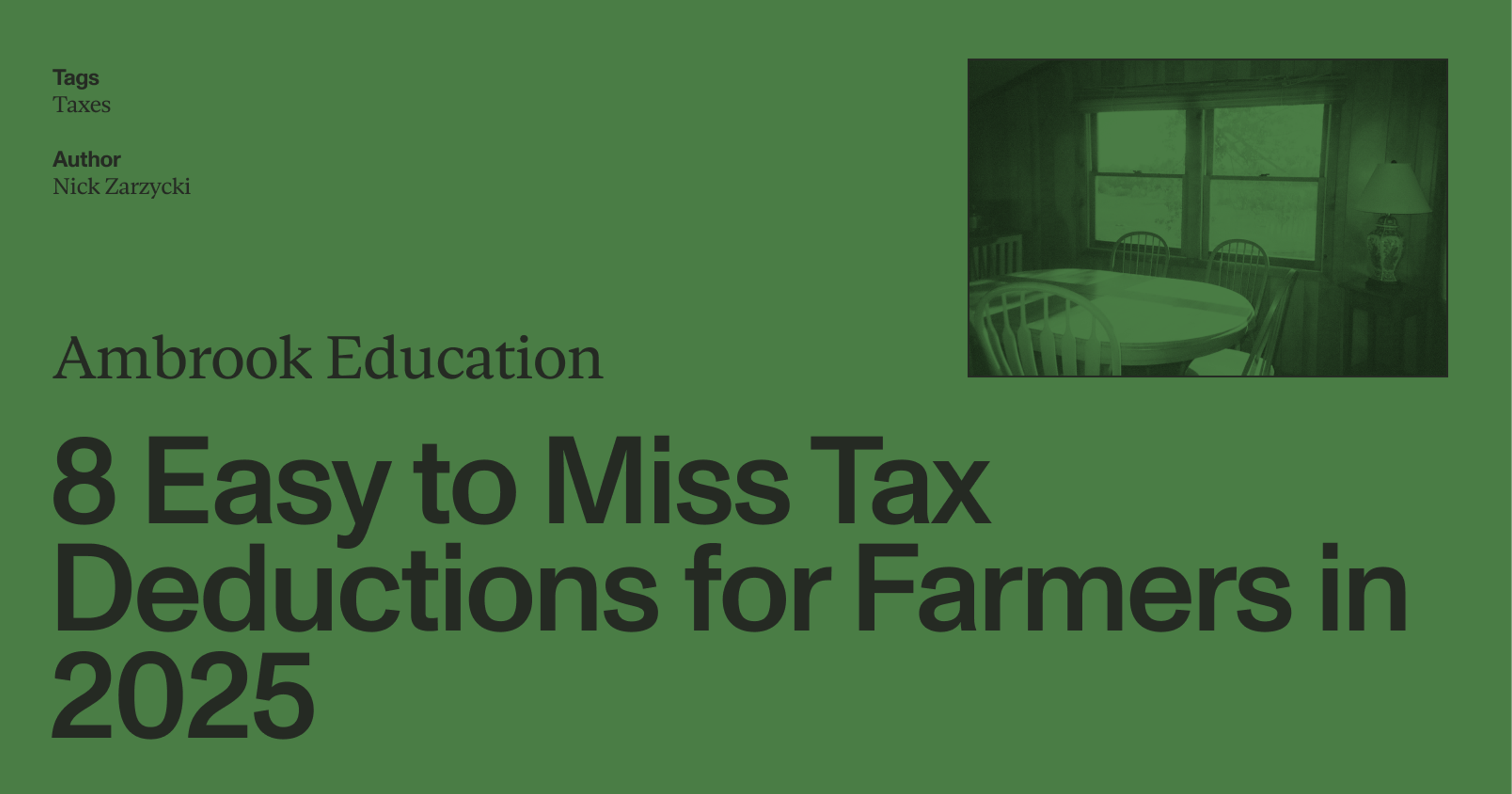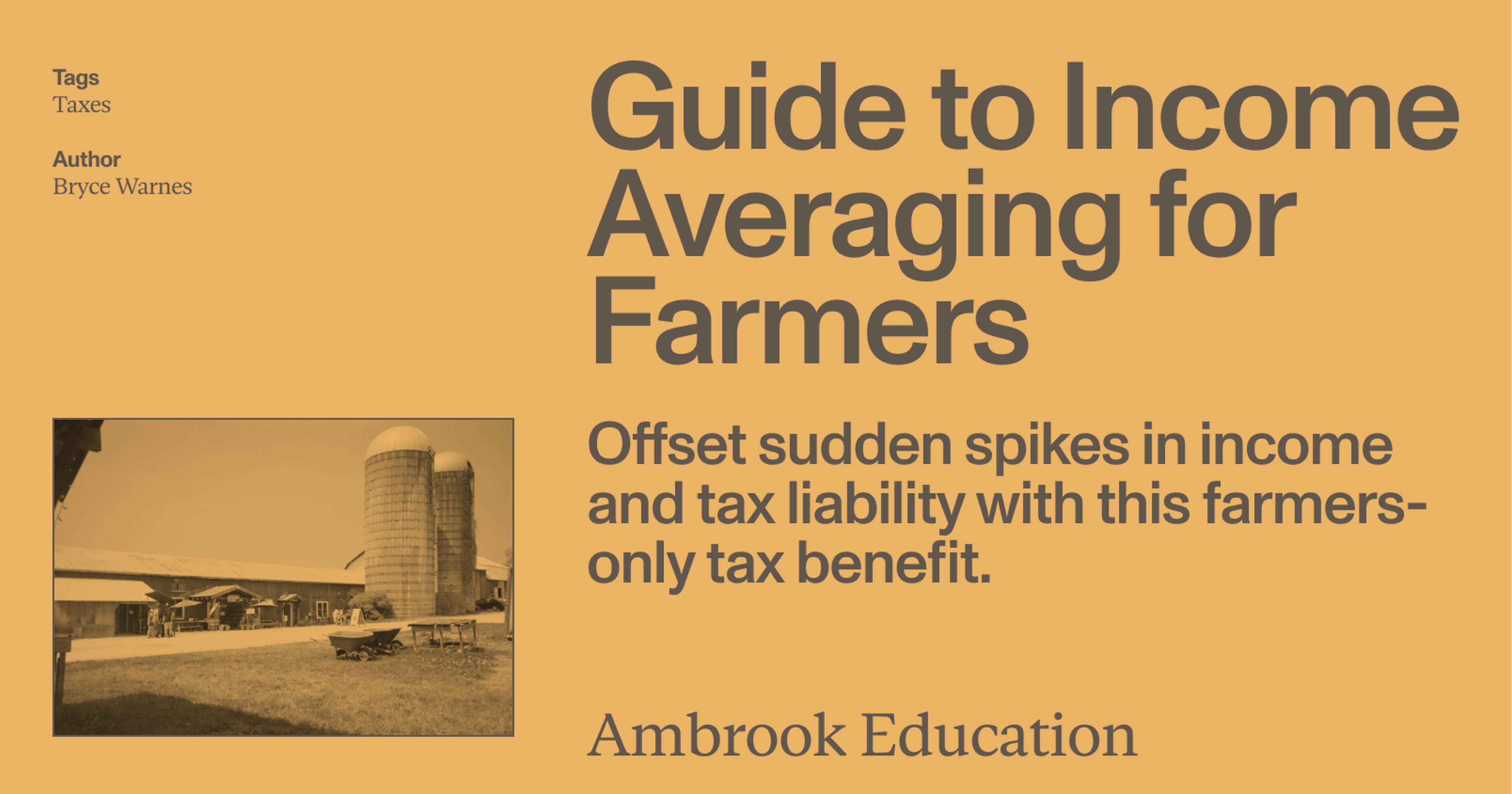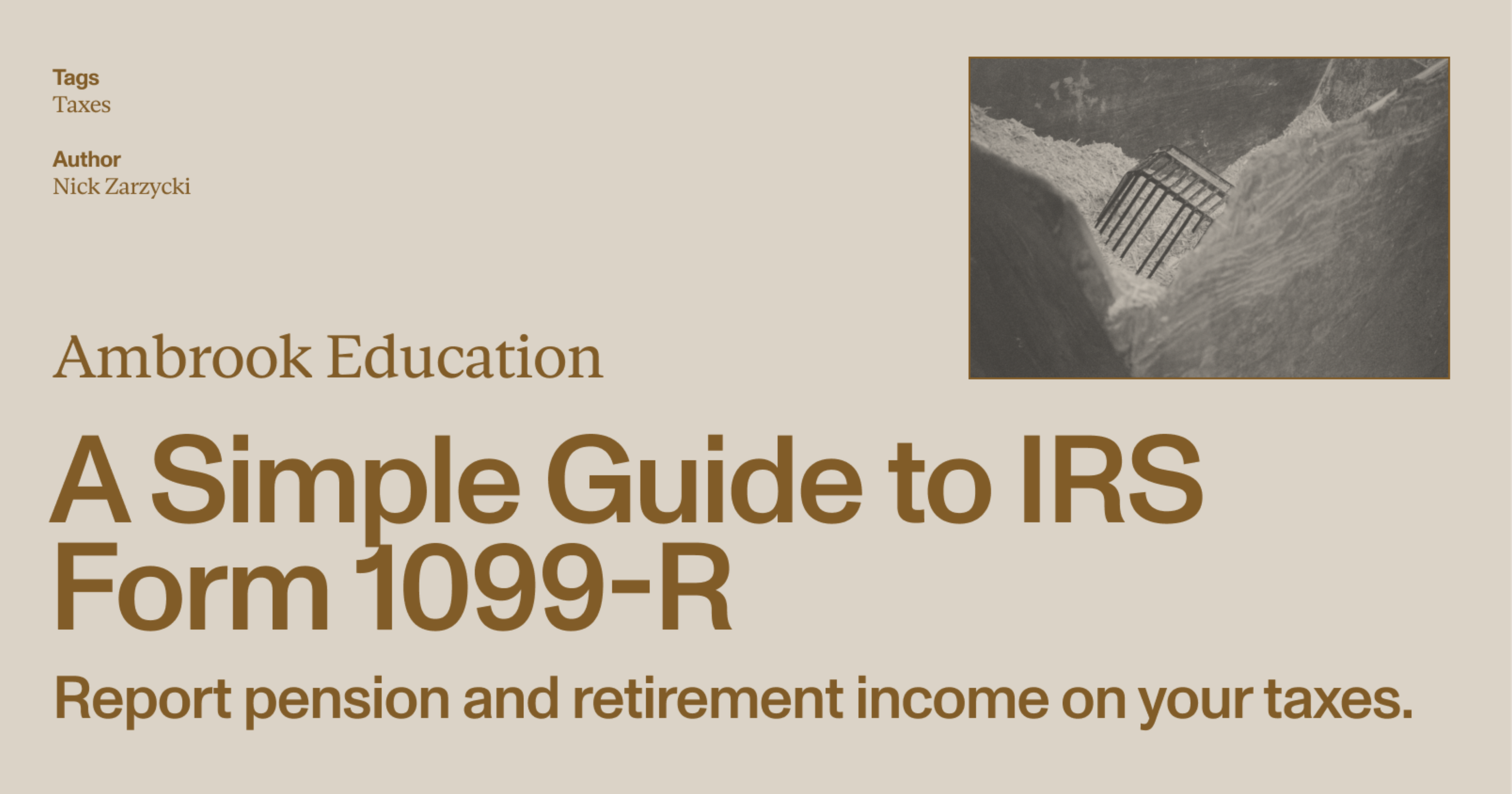There are better ways to reduce your tax bill than purchasing a new truck. Here’s a few to ask your tax professional about.
It’s October, and for many agricultural producers that means consulting with your tax professional to evaluate options for year-end tax planning.
Farmers are entitled to a slew of deductions, credits and other tax benefits that aren’t available to main street businesses, and they can be particularly important in high-income years when the prospect of a large tax bill looms large.
While experts generally advise against making important business decisions based purely on tax considerations, farmers have numerous options for smoothing out the impact of a high-income year, including deducting prepaid supplies, deferring crop insurance proceeds and claiming certain deductions.
Here are some year-end tax moves you should ask your tax preparer about.
First, get your income statement together
The first thing your tax advisor will ask for is your income statement, which will provide a foundation for your tax planning. A year to date income statement is fine: your advisor will probably ask you for income and expense estimates for the remainder of the year to generate a ballpark profitability figure, and also a tax bill estimate.
Want to get a head start on your taxes this year?
Elect Section 179
Also called the “immediate expense election,” Section 179 allows businesses to write off a considerable portion of their equipment, machinery and other tangible property in the year that they purchase it and place it in service, rather than waiting to depreciate it over many years.
The Section 179 limit for 2025 is $2,500,000, however the total value of the deduction can’t exceed the taxpayer’s total income for the year, and it starts to phase out when you purchase more than $4,000,000 of assets during the year.
Section 179 only applies to business property, or property you use in your business more than 50% of the time. You can use it for:
Machinery and equipment like:
tractors, combines and threshers
milk tanks and grain bins
gasoline storage tanks and pumps
automatic feeders and barn cleaners
Improvements to property like:
heating and air conditioning systems
roofs and fences
fire protection and security systems
Agricultural and horticultural structures like chicken coops, hog barns and greenhouses.
Breeding and dairy livestock including horses, cattle, hogs, sheep and goats.
What can’t I use Section 179 for?
Section 179 can’t be elected for personal property, and you can’t use it for assets you purchased from someone you’re related to.
You can also only take Section 179 for assets you place in service before the end of the year. If you purchase equipment in 2025 but don’t place it in service until after December 31, 2025, for example, you can’t take 179 for that equipment 2025.
Section 179 also only applies to 15-year property or less, which means it can’t be used for certain farm buildings like sheds, barns, farmhouses, and other 20-year assets. It also can’t be used for land or improvements to land, including paved parking lots, bridges, and non-agricultural fences.
Are there any downsides?
While Section 179 can be useful, it can also make it difficult to sell certain assets or pass them down to your relatives. If you sell a Section 179 asset, for example, you’ll have to “recapture” the excess depreciation the year you sell it, which could create a tax liability.
Recapture means calculating the amount of depreciation you would have claimed without Section 179. Then you compare regular depreciation to your Section 179 write-off. If your section 179 deduction was higher, you’ll have to report that amount on your taxes as income.
You may also have to recapture Section 179 deductions if your business use of the asset drops to 50% or less, you give the asset away, or trade or exchange it for another asset.
For these reasons and more, we recommend consulting a tax professional before claiming Section 179 on your return.
Read more: An Introduction to Section 179 and Bonus Depreciation
Claim Bonus Depreciation
Also referred to as additional first-year depreciation (AFYD), Bonus Depreciation is a tax rule similar to Section 179 that allows taxpayers to write off a large percentage of the cost of qualifying assets in the year that they’re placed in service.
First introduced in 2017, Bonus Depreciation was originally set to phase out gradually until it disappeared completely in 2027, but recent legislation brought the Bonus Depreciation rate back up to 100% for asset purchases made and placed into service after January 19, 2025.
Like Section 179, Bonus Depreciation can’t be used for 20-year assets, land or improvements to land, but it can be used for most other tangible farm property. Certain assets are also eligible for Bonus Depreciation but not Section 179, like general purpose buildings.
Bonus Depreciation is also less flexible than Section 179. While you can apply Section 179 on an asset-by-asset basis, you must use bonus depreciation on a class-by-class basis. (For example, if you use Bonus Depreciation for five year property, you must use it for all assets in that class.) Because of this, businesses will generally elect Section 179 before they use Bonus Depreciation.
Are there any downsides to claiming bonus depreciation?
Using Section 179 and Bonus Depreciation decreases your future depreciation deductions, which can increase your taxes later. Claiming all of your deductions at once when purchasing financed equipment can make it difficult to pay off the loan principal later. Claiming bonus depreciation can also sometimes make it difficult to pass your assets on to the next generation.
Deduct prepaid supplies (feed, seed, fertilizer, etc.)
If you use the cash method of accounting to report your income, you can write off a percentage of the fertilizer, lime, seed, feed, and other supplies you purchase for use in future years provided the purchases meet certain conditions, including:
The payment is for the actual purchase of supplies, and not a deposit.
The prepayment has a business purpose–i.e. to claim a discount or secure better terms, guarantee supply, etc.--and isn’t merely for tax avoidance.
The prepayment doesn’t result in a material distortion of your income.
The limit for deducting prepaid supplies in this way is 50% of the total value of the other deductible farm expenses you claim that year using Schedule F.
This limit doesn’t apply if your prepaid farm supply expenses total more than 50% of your other farm expenses because of unusual circumstances, like an outbreak of disease or a natural disaster. The limit also doesn’t apply if your prepaid farm expenses totaled less than 50% of your other farm expenses for the last three years.
Read more: Farm Tax Deductions: Supplies, Fertilizer, Feed and Goods for Resale
Defer income using installment sales
For farmers, installment sales are a practical way to turn large, infrequent asset sales into manageable income streams. The IRS installment sale rules let you spread the tax burden over multiple years instead of recognizing the entire gain in the year of the sale, ensuring you don’t pay taxes until you have the cash in hand.
An installment sale generally involves the sale of tangible assets, like real estate, machinery, or livestock. However, a few types of sales don’t qualify, including inventory items like harvested grain, market-ready produce, or chickens; sales of publicly traded securities, property sold at a loss, and sales using the accrual accounting method.
Read more: Form 6252: How to Report Installment Sales on Your Taxes
Use income averaging to enter a lower tax bracket
Farmers may average some or all their farm income from the current year over the prior three years. This can be beneficial in higher income years when farmers expect to enter a higher tax bracket, effectively allowing them to take advantage of the previous three years’ lower tax rates.
While the calculations for income averaging can get pretty complicated, one USDA study found that on average farmers saved $4,434 with income averaging.
Read more: A Guide to Schedule J (Form 1040): Income Averaging for Farmers
Formalize your compensation
The way you pay yourself can have a huge impact on how you’re taxed. Paying yourself an owner’s draw can give you more flexibility, for example, but it also creates a tax burden you have to deal with later in the year. Paying yourself a salary, participating in your employee health insurance plan and maximizing the amount you contribute to an eligible retirement plan could potentially lower your tax burden.
Only certain business structures allow business owners to pay themselves a salary rather than a draw, including S Corporations and LLCs that elect to be taxed as corporations. Discuss your options with a tax professional.
Read more: Owner’s Draw or Salary: How Should I Pay Myself?
Build your savings
Be sure to ask your tax professional about the benefits of contributing to a Roth or Traditional IRA, SEP, solo 401(k) or other eligible retirement savings account, which can offer tax benefits and build long-term savings. Similarly, contributing to a Health Savings Account (HSA) under a high deductible health plan can also help shelter income.
Ask your lawyer or accountant about other business structures
In an industry where income can swing widely from year to year with markets and the weather, choosing the right business structure to fit your needs and financial situation can help smooth out tax burdens and even shrink your overall tax bill. Ask your accountant, lawyer or tax professional whether switching to another business structure could benefit your operation.
Read more: How to Choose the Right Business Structure for Your Farm or Ranch
Claim farming tax deductions and credits
There are numerous credits and deductions available to farmers at both the state and federal level–so many that it can be difficult to track them all.
Consult our guides to federal tax credits and state tax credits for farmers for a full breakdown of all the credits your business might qualify for. Our guide to federal deductions for farmers also provides a detailed rundown of all the expenses you may claim on Schedule F.
Keep in mind that recent legislation has changed certain deduction and credit amounts for 2025 and beyond, and that certain green tax credits have expiry dates in 2025 and early 2026, including:
December 31, 2025
Residential Clean Energy Credit
Energy Efficient Home Improvement Credit
June 30, 2026
Alternative Fuel Vehicle Refueling Property Credit
New Energy Efficient Home Credit
Energy Efficient Commercial Buildings Deduction
Make food and other non-cash donations
As an agricultural producer, donating raised commodities like harvested crops or livestock gives you a tax advantage that donating cash does not, especially if you don’t itemize your deductions, because you don’t incur any income or self-employment tax on the value of the donation. Remember that for any donation of raised commodities, you must transfer ownership of the commodity to the qualified organization in order to report it as a noncash donation.
Read more: How to File Form 8283 for Food and Other Donations
What about gifts and hiring my kids?
Transferring income or assets to relatives or employees for tax purposes–also known as ‘income splitting’ or ‘income shifting’–could potentially offer benefits, but it can also get complex.
For example, the IRS ‘kiddie tax’ rules generally prevent parents from transferring income to their kids to take advantage of a lower tax bracket, and gifted land or equipment also generally doesn’t benefit from step-up in basis. At the same time, hiring a child as a bona fide employee and choosing the right business structure could result in significant tax savings.
If you work with family members, be sure to ask your tax advisor, lawyer or farm succession planning expert about any potential tax savings from entity planning.
Read more: Tax Strategies for Farm & Ranch Succession Planning
Your tax preparer will thank you for using Ambrook
With Ambrook, every transaction is automatically imported from your bank account and categorized, making it easier to track qualifying expenses and claim credits and deductions on your tax return.
Plus, with time-saving bookkeeping automation features, support for Schedule F categories, automatically-generated financial reports and other powerful accounting and financial management tools, Ambrook doesn’t just make your accounting easier: it takes the guesswork out of running your business. Want to learn more? Schedule a demo today.
Want to learn more about Ambrook?
This resource is provided for general informational purposes only. It does not constitute professional tax, legal, or accounting advice. The information may not apply to your specific situation. Please consult with a qualified tax professional regarding your individual circumstances before making any tax-related decisions.









